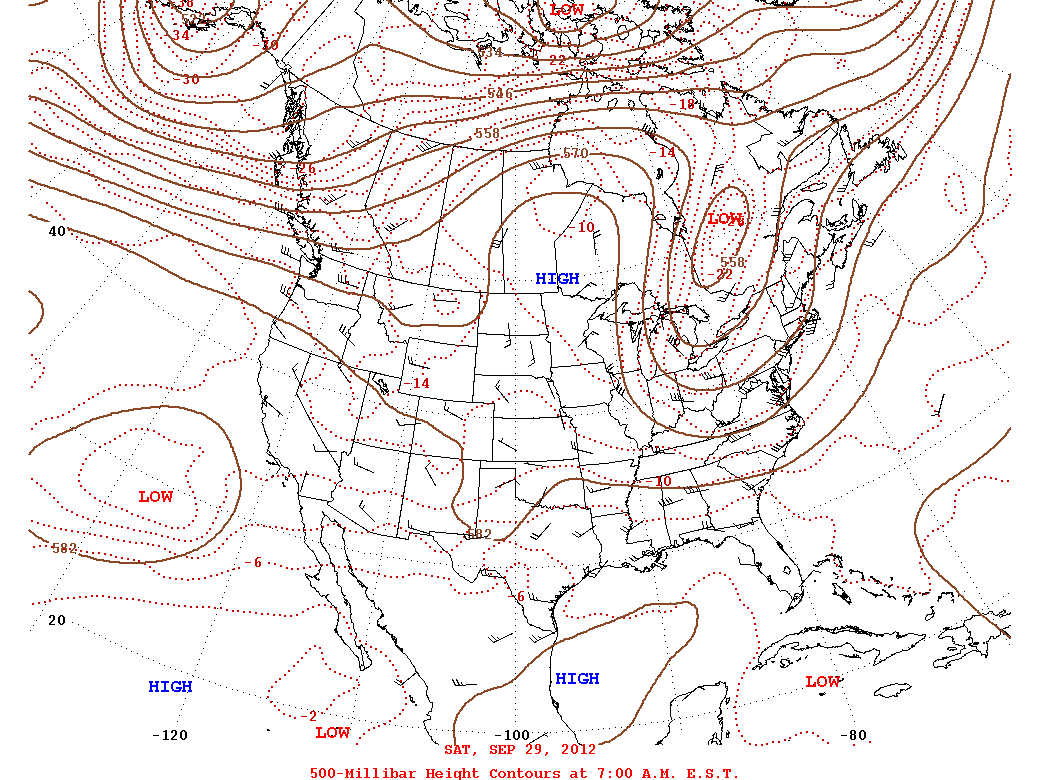Could this be a sign of new patterns in a new cycle? A 50-51 cycle duration? I find analyzing 500mb maps is a fun pastime. The old 'stare and compare' method.
Aug-18 correlates to the GFS Oct-6
Aug-25 correlates to the GFS Oct-14

I've been following a couple cycles as of late. The 2011-12 46-ish day cycle has had a few last gasps and I picked up on a 40 ish day cycle that quickly shrunk down to 30 ish day cycle (see Aug-18 and Sep-21 and go backwards for an example) that I am losing confidence in, but now...
Sep-7 correlates to the GFS Oct-6, it grows a day or two...
Sep-12 correlates to the GFS Oct-15

----
(first posted on Sep-24, 2012)
Cycle length is still shrinking. New energy is being added to the patterns.
(Aug-30)

(GFS Oct-3: 204hr Forecast Sep-24)

I love me some map to map comparisons. Knowing the LR models are usually a day or two early, put this comparison in motion and it would seem the GFS has the right idea with a near 40 day cycle length.
----
(first posted on Sep-10, 2012)
There has been activity in the
Bearing Sea and Gulf Of Alaska lately that will soon resemble a unique pattern of this years LRC.
(
Pacific 500 Analysis: Aug-29/Sep-9)

This particular pattern started to take form during the middle of September last year and then solidified itself a spot in the 2011-12 cycle the first half of November. Recurring the second half of December, first half of February, second half of March, first half of May, second half of June, first half of August, and now likely to recur one more time the second half of this September. (Follow this pattern through the seasons by utilizing the
2011-12 LRC Calender A linked date will bring up the 500 map for that day)
The 2011-12 cycle patterns are transitioning. Since middle August the duration of the cycle has seemed to slowly shrink. In other words the patterns are cycling through at a quicker pace and likely morphing as "new energy" is introduced with our strengthening jet stream. For example, the
first half of August is showing a strong resemblance to the
GFS 500 forecast beginning September 13. 40-ish day duration. Back to back to back eastern half of CONUS/CANADA troughs.
(Aug-4, 2012)

(GFS Sep-10: 075hr Forecast Sep-13)

It would seem there should be three or four consecutive troughs entering the eastern half of CONUS/CANADA during the second half of September which is a pattern that has been recurring since last November. Soon after this has taken place, confidence is high that 2012-12 cycle patterns will begin to reveal themselves with a more eye popping appeal. Game on?
If there are any questions or thoughts on my research and analysis of the LRC or how I presented the material just let me know in the comments section of the blog. Thanks for reading!

















































